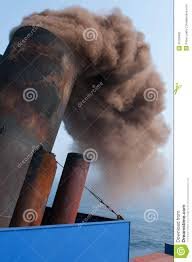Well here goes another question...
Being new to boats i can't help but ponder why more recreational boats aren't keel cooled and dry stacked. It seems that i would eliminate both cost, complexity and maintenance. I know Nordys are...and probability other passagemakers too. But why not your run of the mill production boats?
What got me thinking about this is that i am considering a repower from my Albin. I had been having some issues with finding parts for my Nissan Diesel. I have an inside connection for industrial/ag Kubota and Deere engines but they are not marine versions.
The only thing i can see is it may be a slight bit of an issue routing the exhaust pipping. I am assume that the after the manifold the pipe is some sort of double wall insulated pipe so it can be ran safely up and out of the vessel. Hardly seems like rocket science.
As for the engine cooling, I have looked at pictures and saw a few boats where the keel cooler is a radiator looking thing specifically made for the job. I have also saw a few where it looks like copper tubing running along the keel. So long as it tucked up where it is unlikely to get slammed by debris or hit during a grounding i don't see why any problems with refitting a boat with either system.
Seems to me that by eliminating an entire system (raw water) it would be both cost effective and reliable. Not to mention opening up more engine choices.
Being new to boats i can't help but ponder why more recreational boats aren't keel cooled and dry stacked. It seems that i would eliminate both cost, complexity and maintenance. I know Nordys are...and probability other passagemakers too. But why not your run of the mill production boats?
What got me thinking about this is that i am considering a repower from my Albin. I had been having some issues with finding parts for my Nissan Diesel. I have an inside connection for industrial/ag Kubota and Deere engines but they are not marine versions.
The only thing i can see is it may be a slight bit of an issue routing the exhaust pipping. I am assume that the after the manifold the pipe is some sort of double wall insulated pipe so it can be ran safely up and out of the vessel. Hardly seems like rocket science.
As for the engine cooling, I have looked at pictures and saw a few boats where the keel cooler is a radiator looking thing specifically made for the job. I have also saw a few where it looks like copper tubing running along the keel. So long as it tucked up where it is unlikely to get slammed by debris or hit during a grounding i don't see why any problems with refitting a boat with either system.
Seems to me that by eliminating an entire system (raw water) it would be both cost effective and reliable. Not to mention opening up more engine choices.



